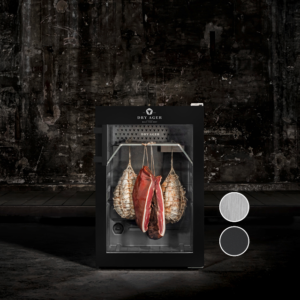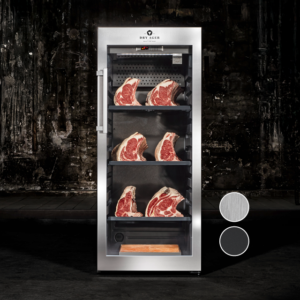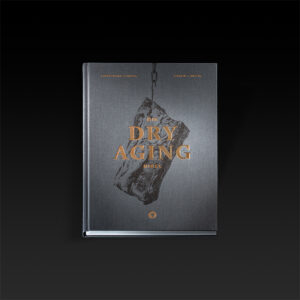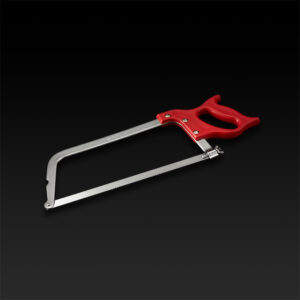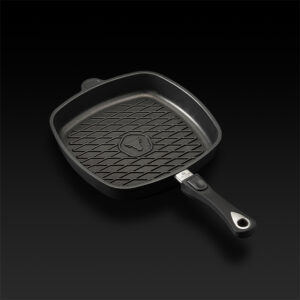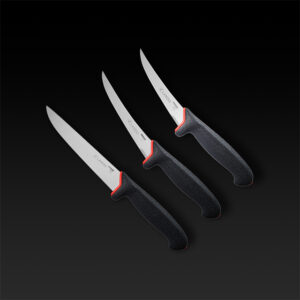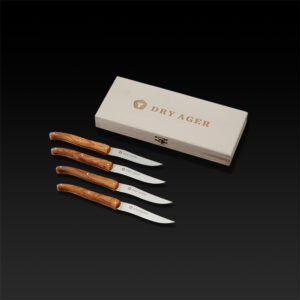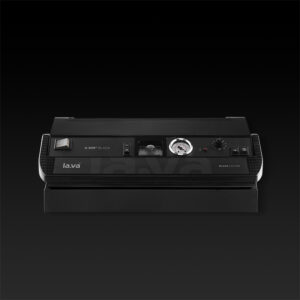Dry Aged Beef and the vacuum matured brother

Dry aging or wet aging? This question creates some heated debates amongst meat gourmets. The wet aging group of people swear by meat maturing in it’s own juice, whilst dry aging fans prefer the flavour development in the dry atmosphere. Whether dry or wet; meat generally benefits from being matured before it is consumed. Only 28 days after the animal is slaughtered, do the enzymes breakdown the muscle tissue. The meat is then extremely tender and delicious.
In the beginning was the Dry Aging
The dry aging process is a centuries old tradition and was once simply called the butcher’s trade secrets. Whole sides of beef or strip loins were hung on the bone in the air, at temperatures just above freezing. This process took several weeks and had to be closely monitored so that the meat didn’t spoil during the dry aging process. What was common place a few decades ago, is now considered indulgence. After dry aged beef almost disappeared from the market, it has experienced in recent years a big growth again.

Dry Aged Beef with event character.
Wet-Aging – the new kid on the block
The birth of wet aging coincided with the advent of vacuum packing technology. In the 1970’s, food lasted longer by the evacuation of air from a bag. Resourceful butchers used the vacuum packing method, which saw a decline in traditional dry aging methods because the weight loss, caused by liquid evaporation, and premature spoilage, due to bacteria contamination, was greatly reduced. The wet aging in vacuum bags was also a lot faster and economically much better for the meat industry. Therefore, the wet aging increasingly replaced dry aging and is now the standard method for meat maturing.

Wet Aging in a vacuum bag.
Factual Calculation
Compare the two aging processes in figures then we’ll see that wet aging is slightly better. The average maturity period of 10 days to a maximum of 6 weeks is just less than dry aging which takes at least 3 to a maximum of 8 weeks. However, sometimes the wait is worth it. The situation is different with weight loss. Only 5 – 6% of the original weight is lost during wet aging. However, up to 30% of its own weight is lost with the dry aged beef due to fluid loss.
This well known problem is solved with the DRY AGER©. The meat maturing fridge combines ancient craft with new technology. The Dry Aged Beef not only keeps well, it tastes even better. Because of a controlled regulation of air supply, it reduces the weight loss to between only 8-12%. With the innovative technology of the DRY-AGER© the debate between the two methods is level.
A matter of taste
When wet aging in a vacuum bag, the meat is cut off the bone and packed. Escaping fluid such as blood can not evaporate. This increases the growth of lactic acid bacteria and creates a slightly metallic/sour taste. This may sound not very appetising, but it is not in reality. About 90% of the meat in the food trade is wet matured. It can’t be said, therefore, that a wet aged steak has never been enjoyed. In contrast to the wet aging in a vacuum bag, the dry aged meat can breathe during the dry aging process. Contact with the air intensifies the interaction of so-called good bacteria and enzymes. The meat forms a dry (non-edible) crust, however, working underneath, the enzymes and microbes are breaking down the muscle meat. This creates the typical intense spicy flavour of Dry Aged Beef, which is often described as nutty or smokey
The price is hot
Last but not least, what does the end result cost? Dry Aged Meat and especially Beef is expensive. With prices ranging from 40-80 Euros per kilo, it is far higher than the cost of wet aged beef from the supermarket. This doesn’t scare lovers of spicy steaks. Good things, cost good money.
Summary
In the end, the question of the better method will be one of individual taste. The two meat maturing methods are so different. There will always be advantages and disadvantages depending on the desired result. For cuts like the T-Bone-Steak and Rump, dry aging is actually compulsory. A good pot roast, however, is best with the liquid from the wet aging bag. A rule of thumb always applies for both aging processes; the better the quality of the meat, the greater the taste of success.
